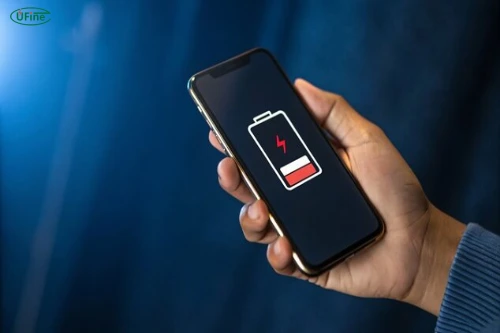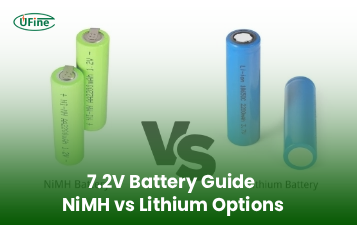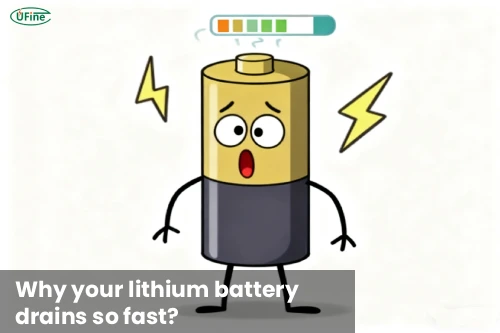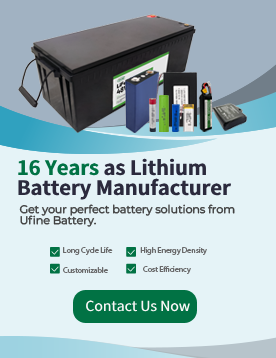
- Part 1. Normal battery drain vs. abnormal battery drain
- Part 2. Main reasons why your lithium battery drains so fast
- Part 3. Reason 1: High discharge loads and power demands
- Part 4. Reason 2: Temperature effects on battery performance
- Part 5. Reason 3: Improper charging or charger incompatibility
- Part 6. Reason 4: Battery aging and cycle life
- Part 7. Reason 5: Internal defects or quality issues
- Part 8. Reason 6: Storage conditions and maintenance habits
- Part 9. Reason 7: BMS Malfunction
- Part 10. How to diagnose why your battery drains so quickly
- Part 11. How to prevent fast battery drain — maintenance tips
- Part 12. Choosing a reliable lithium battery supplier
- Part 13. FAQs
This guide explores why lithium batteries drain quickly, how to diagnose the problem, and what you can do to extend your battery’s lifespan.
Part 1. Normal battery drain vs. abnormal battery drain
Before assuming your lithium battery is defective, it’s important to understand the difference between normal and abnormal drain.

Normal battery drain occurs naturally as energy is consumed during use or stored over time. Even when a lithium battery is idle, a small self-discharge (typically 2–5% per month) happens due to internal chemical activity.
Abnormal battery drain, however, happens when the battery loses charge significantly faster than usual. Signs of abnormal drain include:
- The battery running out of power much sooner than it used to.
- A noticeable drop in runtime even under light usage.
- Rapid voltage drop immediately after charging.
- Overheating or swelling during discharge.
Recognizing these symptoms early can help you prevent permanent damage and identify whether the issue lies in the battery itself, the charging system, or external conditions.
Part 2. Main reasons why your lithium battery drains so fast
There isn’t a single reason for fast discharge — it’s often a combination of factors such as temperature, power demand, charging habits, and battery quality. Let’s look at the most common causes one by one.
Part 3. Reason 1: High discharge loads and power demands
One of the leading causes of rapid battery drain is excessive current draw. Lithium batteries are designed to provide stable energy output, but when connected to high-drain devices — like power tools, electric bikes, drones, or high-performance gadgets — they can discharge very quickly.
Every lithium cell has a maximum continuous discharge rate (often expressed as “C-rate”). If your device draws more current than the battery can safely supply:
- The voltage drops rapidly.
- Internal temperature rises.
- The battery discharges and degrades faster.
Solution: Check the battery’s rated discharge current and ensure it matches your device’s requirements. Using a pack with a higher discharge rating or a larger capacity can reduce strain and extend runtime.
Part 4. Reason 2: Temperature effects on battery performance
Temperature has a major impact on how lithium batteries behave. Chemical reactions within lithium cells are temperature-sensitive, and both extreme heat and cold can accelerate battery drain.
- In cold conditions:
- The chemical reaction slows down, increasing internal resistance. The result? Less available current and reduced runtime.
- In hot conditions:
- High temperatures boost reaction speed but degrade electrolytes and electrodes, shortening lifespan and causing permanent capacity loss.
Optimal temperature range:
Most lithium batteries perform best between 15°C and 30°C (59°F–86°F).
Solution:
Keep your devices and battery packs in moderate environments. Avoid leaving lithium batteries inside hot cars or unprotected in freezing weather. Ufine Battery, for instance, designs custom lithium packs with enhanced temperature protection to maintain performance across different climates.
Part 5. Reason 3: Improper charging or charger incompatibility
Another common cause of fast-draining batteries is improper charging practices. Lithium batteries require chargers specifically designed for their chemistry and voltage profile.
Using an incorrect charger can cause:
- Undercharging, where the battery never reaches full capacity.
- Overcharging, which stresses the cells and leads to faster capacity degradation.
- Unbalanced charging, causing some cells in the pack to drain faster than others.
Solution: Always use a compatible charger with the correct voltage and current ratings. A smart lithium charger that includes overcharge protection and cell balancing can significantly extend battery life.
Part 6. Reason 4: Battery aging and cycle life
Even the best lithium battery won’t last forever. Every time it’s charged and discharged, the internal chemistry degrades slightly — a process known as capacity fade.
Most lithium-ion and LiFePO4 batteries offer between 500–3,000 charge cycles, depending on quality and usage conditions. Over time:
- The active lithium ions decrease.
- The internal resistance increases.
- The battery can no longer hold the same charge as before.
Signs of aging:
- Noticeable drop in runtime.
- Voltage drops faster under load.
- Battery no longer reaches full capacity despite full charge.
Solution: Once your battery’s effective capacity drops below 70–80% of its original, it’s often time for a replacement. Investing in high-quality lithium batteries from a trusted manufacturer like Ufine Battery helps ensure longer cycle life and consistent performance.
Part 7. Reason 5: Internal defects or quality issues
Not all lithium batteries are created equal. The market is flooded with cheap, unbranded, or counterfeit cells that use low-grade materials or lack quality control. These defects can lead to:
- High self-discharge rates
- Inconsistent voltage
- Rapid capacity loss
- Potential safety risks (swelling, leakage, or short circuit)
Why quality matters:
A genuine lithium battery uses carefully matched cells, consistent separators, and advanced electrolyte formulas to ensure stability and safety.
Ufine Battery’s Advantage:
As a professional lithium battery manufacturer with 17+ years of experience, Ufine Battery produces high-performance Li-ion, LiPo, and LiFePO4 packs under strict ISO and UL certification standards. Every pack undergoes rigorous testing for capacity, discharge rate, and safety before shipment — minimizing the risk of premature drain or failure.
Part 8. Reason 6: Storage conditions and maintenance habits
How you store your lithium batteries directly affects their longevity and discharge behavior. Poor storage practices are one of the most overlooked causes of capacity loss.
Common storage mistakes:
- Storing fully charged or fully discharged batteries for months.
- Exposing them to humidity, heat, or freezing temperatures.
- Neglecting to recharge them during long periods of inactivity.
Best practices:
- Store batteries at about 40–60% charge in a cool, dry environment (around 20°C / 68°F).
- If stored for long periods, recharge them every 3–6 months.
- Avoid leaving them connected to devices that draw standby current.
By maintaining proper storage conditions, you can prevent permanent chemical imbalances that cause fast drain and loss of capacity.
Part 9. Reason 7: BMS Malfunction
Most modern lithium battery packs include a Battery Management System (BMS) — a protective circuit that regulates voltage, current, and temperature. If the BMS malfunctions, it can cause:
- Over-discharge or under-discharge
- Incorrect voltage readings
- Power cutoffs or shortened runtime
Symptoms of a faulty BMS:
- The battery drains even when not in use.
- The device shuts down unexpectedly.
- The battery indicator shows inaccurate charge levels.
Solution: Inspect the BMS for faults or improper calibration. If you’re using a custom battery pack, work with your manufacturer to get the BMS replaced or recalibrated.
Part 10. How to diagnose why your battery drains so quickly
If you’re unsure why your lithium battery drains so fast, systematic diagnosis can help. Here’s a step-by-step process:
- Check the load current using a multimeter to see if your device is drawing excessive power.
- Measure the voltage before and after charging — a sudden voltage drop indicates weak cells.
- Inspect temperature during operation. Overheating usually means overcurrent or internal defects.
- Test the charger — ensure it matches your battery’s voltage and current specifications.
- Evaluate the BMS to see if it’s functioning correctly.
- Consider battery age — if it’s been through hundreds of cycles, replacement might be the only fix.
Professional testing:
For industrial or high-capacity lithium packs, consult your manufacturer for diagnostic support.
Part 11. How to prevent fast battery drain — maintenance tips
Prevention is always better than replacement. Here are proven ways to extend the lifespan of your lithium battery and reduce fast drain:
- Use the right charger: Match the charger to the battery’s chemistry and voltage.
- Avoid full discharges: Lithium batteries last longer when kept between 20% and 80% charge.
- Keep it cool: Store and operate at moderate temperatures.
- Charge periodically during long storage periods.
- Avoid continuous high loads: If possible, use a battery with higher capacity or C-rate.
- Choose quality: Always buy from a reputable supplier that guarantees safety and performance.
These small maintenance habits make a huge difference in preserving battery health and ensuring stable output.
Part 12. Choosing a reliable lithium battery supplier
When selecting lithium batteries for your project or device, reliability and quality assurance are key. Here’s what to look for in a trusted battery manufacturer:
- Consistent cell matching and testing
- Certifications such as CE, UL, UN38.3, and ISO
- Support for OEM/ODM customization
- Proven experience in lithium battery pack design
Why Choose Ufine Battery
Ufine Battery is a leading custom lithium battery manufacturer in China, serving over 1,000 global clients across electronics, energy storage, and EV industries.
Key advantages:
- 17+ years of experience in lithium battery R&D and production.
- Comprehensive product range — Li-ion, LiPo, LiFePO4 cells and packs.
- Flexible customization (shape, capacity, voltage, and BMS options).
- 1-piece minimum order quantity, ideal for both prototyping and mass production.
- Strict quality control and 200+ certifications ensuring safety and reliability.
Whether you need batteries for consumer electronics, e-bikes, solar systems, or industrial equipment, Ufine Battery can design custom solutions optimized for long runtime, safety, and performance stability.
Contact Ufine Battery today to discuss your custom lithium battery requirements and get expert support for your application.
Part 13. FAQs
Why does my lithium battery lose charge when not in use?
Lithium batteries self-discharge slowly even when idle due to internal chemistry. If your battery drains too fast when unused, it may be due to parasitic loads, aging, or internal defects.
Can a damaged charger cause battery drain?
Yes. A malfunctioning charger can undercharge or overcharge the battery, leading to faster degradation and shorter runtime.
How do I know if my lithium battery is bad?
Symptoms include fast discharge, swelling, overheating, and voltage dropping below nominal levels. Use a multimeter to verify if it still holds charge properly.
How can I extend my lithium battery lifespan?
Avoid deep discharges, extreme temperatures, and overcharging. Keep your battery partially charged when stored for long periods.
Should I completely discharge lithium batteries occasionally?
No. Unlike older NiCd batteries, lithium cells do not require full discharge cycles. In fact, full discharges reduce their lifespan.
Related Tags:
More Articles

NiMH vs Lithium 7.2V Battery and Charger: Which Is Better?
Compare 7.2V NiMH vs Lithium batteries and chargers in 2025. Learn runtime, weight, charging, lifespan, and cost to choose the best for your device.
How to Choose the Right 7.2V Battery and Charger for Your Device?
Learn how to choose the right 7.2V battery and charger for optimal performance, safety, and longevity across RC, tools, medical, and industrial devices.
Big Square Battery Safety Standards You Must Know
Learn key safety standards for big square batteries to avoid fire risks, shipping delays, and compliance issues in EV, industrial, and energy storage projects.
Big Square Battery Applications in Solar & Industrial Equipment
Big square batteries deliver high capacity, stable output, and long life for solar, industrial, and backup power. Explore key uses and advantages.
Big Square Battery vs Cylindrical Battery: Complete 2025 Guide for EVs, ESS & Industrial Devices
Choosing the right battery is key for designers and engineers. Compare big square vs cylindrical batteries to find the best fit for your application.



